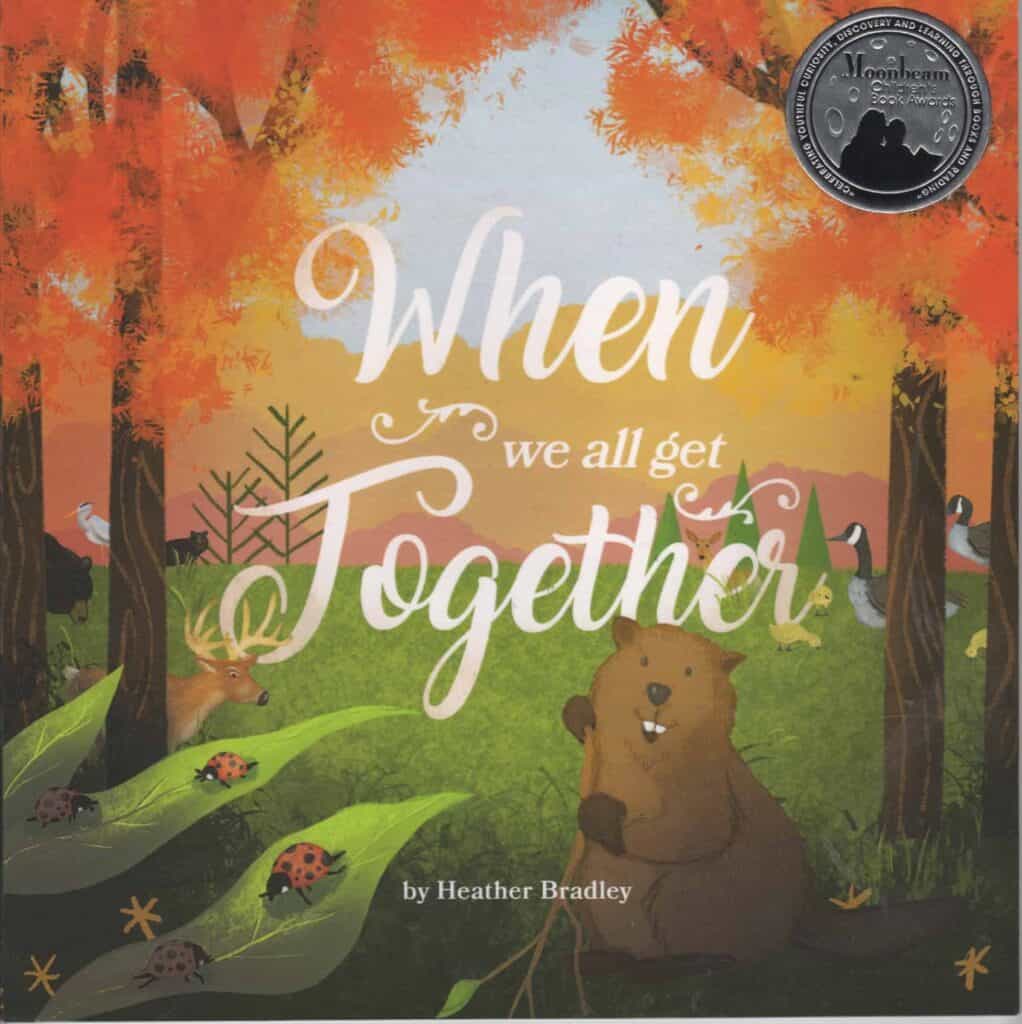
When We All Get Together
By Heather Bradley
Friesen Press
44 pages
$19.32
I don’t know about other languages, but English tends to have names for groups of creatures. These are called collective nouns and do vary from region to region.
One of my favourites is the way of naming a flock of ravens, for which there are at least three options I am aware of. We have a lot of them here in Dawson, and they are sneaky, so about 15 years ago I started calling them a “conspiracy.” Other people corrected me and said they were an “unkindness,” which caused me to do some research and find out that both words, including the one I thought I had coined, were acceptable usage, along with a third term—a treachery.
Ravens, I am sad to say, didn’t make it into this book, but 17 other animals, birds and insects did.
Bradley starts out with a group of trees, which is, of course, a forest. But after that she wanders through a typical Canadian forest, naming everything in sight and not organizing them in any particular order.
The list begins with a colony of beavers and continues on through a bevy of otters, a gaggle of Canada geese, a prickle of porcupines, a herd of moose, a nursery of raccoons, a sleuth of black bears, a clutter of lynx, a mischief of mice, a leash of red foxes, a scurry of chipmunks, a loveliness of ladybugs, a dray of grey squirrels, a sedge of great blue herons, a gang of wolverines, a parcel of white-tailed deer and a scourge of mosquitoes.
The two-page spreads begin with an image of a single creature, with the facing page showing several of them in their natural setting.
Animal groups have a number of strange names and sometimes more than one, as with ravens. The sedge of herons is also a “siege,” for instance, and most of the birds can also simply be flocks. There are lots of websites that list names for animal groups, and one of the most amusing has to be the one for monkeys, which happens to be “a barrel,” as in the saying “More fun than a barrel of monkeys.”
Bradley is a retired elementary school teacher who also worked at the Ontario Science Centre, so it’s not surprising that she would come up with this idea for a book.
While the book is primarily geared to youngsters up to age seven, Bradley tried to make the book appealing to parents, too, “because they will be reading it over and over again,” she said in an interview in the Peterborough Examiner.
The book doesn’t list the name of the illustrator, but the interview notes that the publisher provided a person who worked with the author.




